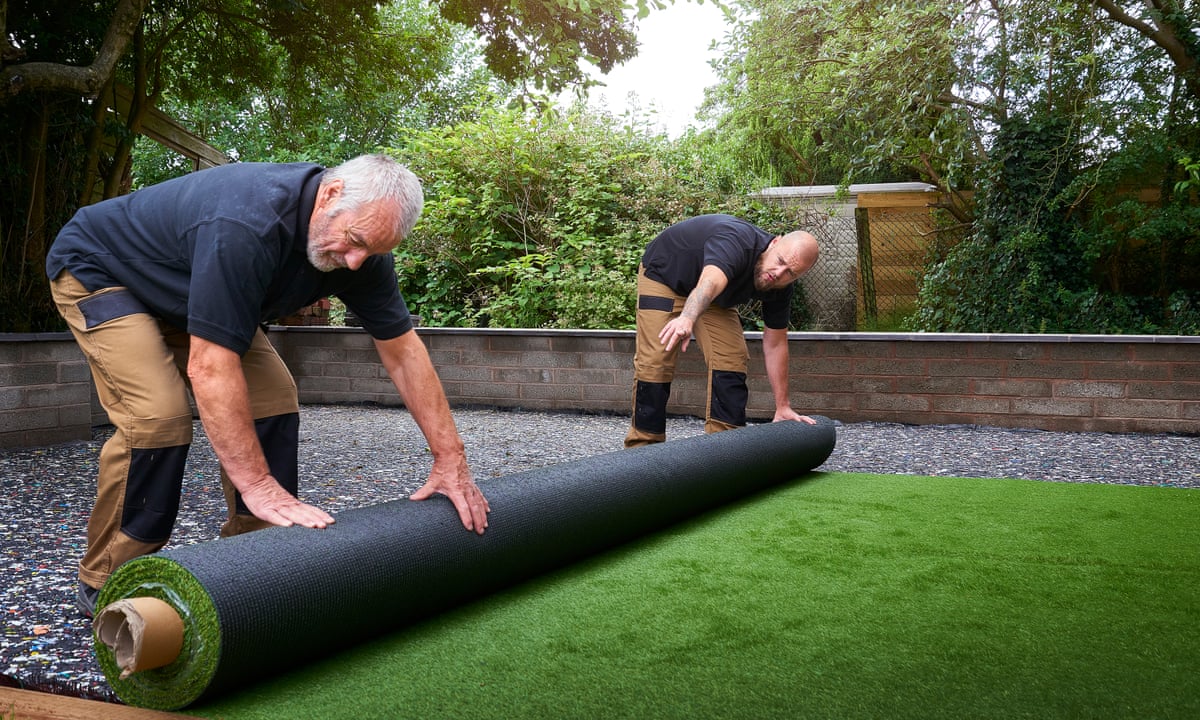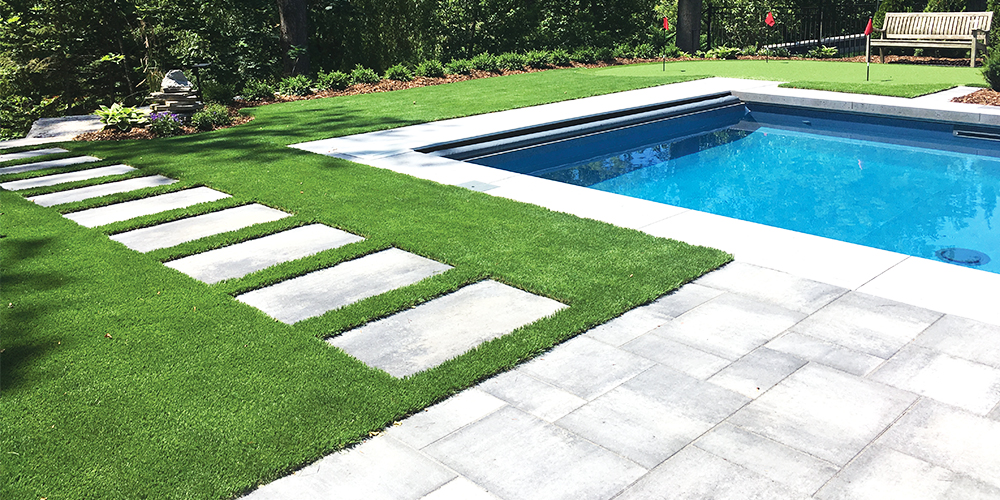Choose the Top Turf Installation Phoenix AZ Solutions for Your Home or Commercial Property
Choose the Top Turf Installation Phoenix AZ Solutions for Your Home or Commercial Property
Blog Article
See Why Homeowners Prefer Synthetic Grass for Sustainable Landscaping Practices
As homeowners progressively focus on sustainability in landscape design, synthetic turf has actually emerged as an engaging choice to traditional lawn. What stays to be checked out is the complete scope of benefits that man-made turf can offer to house owners and the setting alike.
Water Conservation Benefits
One of the most significant benefits of synthetic turf is its function in water conservation. In comparison, synthetic grass eliminates this need entirely, as it does not need irrigation.
Moreover, the setup of synthetic grass can contribute to an extra sustainable landscape. House owners can significantly reduce their water expenses, permitting for reallocation of sources to various other environmental efforts or household usages. Additionally, synthetic grass is created to withstand numerous climatic conditions without the need for supplementary watering, making it a perfect selection for regions facing water deficiency.
The environmental advantages prolong beyond instant water cost savings. By decreasing water consumption, synthetic grass aids to alleviate the effects of climate change, protecting vital communities that are threatened by too much water extraction. As lasting landscaping techniques acquire grip, synthetic grass arises as an accountable selection for homeowners looking for to produce eco-friendly outdoor spaces.
Minimized Maintenance Efforts
Synthetic grass substantially reduces maintenance efforts contrasted to conventional lawn lawns. With man-made grass, house owners can remove the taxing tasks connected with all-natural landscape design, such as mowing, feeding, and weeding. This not only conserves useful time but also minimizes physical labor, making grass care accessible for people of any ages.
Among one of the most remarkable advantages is the absence of regular mowing. Standard yards need regular cutting to preserve a visually pleasing elevation, whereas synthetic grass remains regularly lush without the demand for reducing. In addition, property owners no more need to apply fertilizers or pesticides, which are typically required to maintain all-natural yard healthy. This shift not just lightens the workload but likewise promotes a neater, more uniform look year-round.
Furthermore, artificial lawn is durable and resistant, needing minimal maintenance past occasional cleaning and rinsing to get rid of debris. This convenience of maintenance enables homeowners to appreciate their outdoor areas without the consistent concern of maintenance, providing even more time for recreation and family tasks. Eventually, the lowered maintenance initiatives connected with synthetic turf make it an appealing choice for those seeking a low-maintenance, aesthetically appealing landscape.

Ecological Impact Reduction
There is a growing acknowledgment of the ecological advantages related to synthetic grass, particularly in terms of water conservation and decreased chemical usage. Conventional lawns call for substantial quantities of water, specifically in drought-prone regions, leading to enhanced pressure on neighborhood water resources. In comparison, synthetic grass gets rid of the requirement for watering, substantially decreasing water usage website here and promoting sustainability.
Additionally, traditional grass maintenance typically entails the application of fertilizers, pesticides, and herbicides, which can contribute to dirt and water pollution. Synthetic grass minimizes this ecological risk by needing minimal upkeep and basically getting rid of the demand for dangerous chemicals. This not just boosts dirt wellness but likewise safeguards neighborhood ecological communities from harmful runoff.
Furthermore, the production of all-natural grass lawns generally involves the usage of nonrenewable fuel sources for mowing and landscaping equipment, additional adding to greenhouse gas exhausts. By choosing artificial turf, house owners can significantly decrease their carbon impact connected with yard treatment activities.
Visual Charm and Adaptability
Along with its environmental advantages, synthetic grass provides considerable aesthetic appeal and adaptability for landscape design. Property owners can accomplish a rich, environment-friendly appearance year-round, eliminating the seasonal changes frequently connected with natural turf. This constant visual not only boosts the aesthetic charm of a residential or commercial property but likewise contributes to a sleek and well-kept appearance.
In addition, man-made grass is offered in a variety of structures, designs, and shades, permitting for customization to suit specific choices and design themes - Arizona artificial turf. Whether made use of in property gardens, commercial areas, or recreational locations, it can seamlessly integrate into diverse landscape design designs, from modern minimalist to lavish exotic settings
The flexibility of synthetic grass expands past simple appearance; it can be mounted in various areas, including rooftops, outdoor patios, and even indoor spaces, creating chances for distinct landscaping options. In addition, it is appropriate for a range of tasks, from kids's play locations to pet-friendly settings, giving capability without endangering design.
Inevitably, the visual allure and flexibility of synthetic turf make it an appealing choice for property owners seeking lasting landscape design options that do not compromise beauty for environmental responsibility.

Long-Term Price Savings
One of the most compelling benefits of fabricated turf is its possibility for lasting price financial savings. Unlike natural grass, which needs normal upkeep-- including mowing, watering, feeding, and parasite control-- synthetic lawn dramatically decreases these ongoing expenses.
Furthermore, synthetic grass has a life expectancy of 15 to 25 years, depending on its high quality and usage. This sturdiness decreases substitute prices, making it a more cost-effective selection in the lengthy run. Furthermore, the preliminary financial investment in synthetic grass can commonly be recouped via the financial savings accrued gradually.
While the in advance price might appear greater contrasted to turf setup, the cumulative savings from lowered maintenance and water usage frequently outweigh these first expenses. Inevitably, the adoption of man-made turf not only advertises a sustainable landscaping service but likewise uses homeowners an economically savvy choice that straightens with long-term budgeting goals.
Conclusion
Artificial grass emerges as a why not check here compelling option for sustainable landscaping, supplying considerable advantages in water conservation, reduced maintenance initiatives, and lessened ecological effect. Its aesthetic charm and flexibility improve the visual landscape while straightening with modern-day sustainability goals. Furthermore, lasting price savings add to its good looks for home owners. As neighborhoods significantly focus on ecologically pleasant techniques, the adoption of synthetic grass represents a progressive action towards attaining resilient and sustainable landscapes.
Additionally, fabricated grass is developed to hold up against different weather problems without the demand for additional watering, making it an excellent option for areas encountering water scarcity. (Artificial turf companies phoenix)

Synthetic turf emerges as a compelling choice for sustainable landscaping, offering significant advantages in water conservation, minimized upkeep efforts, and reduced environmental influence.
Report this page